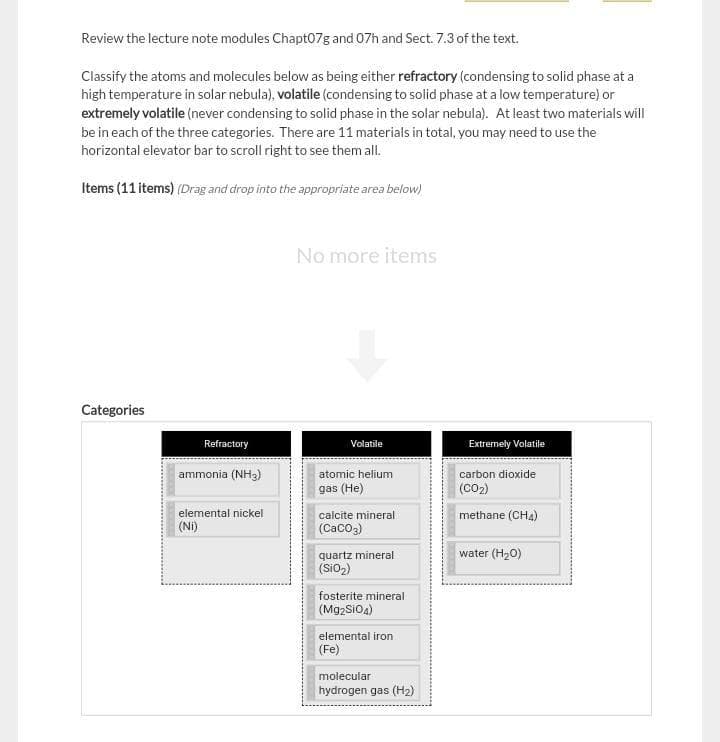Review the lecture note modules Chapt07g and 07h and Sect. 7.3 of the text. Classify the atoms and molecules below as being either refractory (condensing to solid phase at a high temperature in solar nebula), volatile (condensing to solid phase at a low temperature) or extremely volatile (never condensing to solid phase in the solar nebula). At least two materials will be in each of the three categories. There are 11 materials in total, you may need to use the horizontal elevator bar to scroll right to see them all. Items (11 items) (Drag and drop into the appropriate area below) No more items Categories Refractory Volatile Extremely Volatile ammonia (NH3) atomic helium carbon dioxide gas (He) (CO2) elemental nickel (Ni) calcite mineral methane (CHA) (Caco3) water (H20) quartz mineral (Sio2) fosterite mineral (Mg2SiO4) elemental iron (Fe) molecular hydrogen gas (H2)
Types of Chemical Bonds
The attractive force which has the ability of holding various constituent elements like atoms, ions, molecules, etc. together in different chemical species is termed as a chemical bond. Chemical compounds are dependent on the strength of chemical bonds between its constituents. Stronger the chemical bond, more will be the stability in the chemical compounds. Hence, it can be said that bonding defines the stability of chemical compounds.
Polarizability In Organic Chemistry
Polarizability refers to the ability of an atom/molecule to distort the electron cloud of neighboring species towards itself and the process of distortion of electron cloud is known as polarization.
Coordinate Covalent Bonds
A coordinate covalent bond is also known as a dative bond, which is a type of covalent bond. It is formed between two atoms, where the two electrons required to form the bond come from the same atom resulting in a semi-polar bond. The study of coordinate covalent bond or dative bond is important to know about the special type of bonding that leads to different properties. Since covalent compounds are non-polar whereas coordinate bonds results always in polar compounds due to charge separation.

Trending now
This is a popular solution!
Step by step
Solved in 2 steps with 1 images




